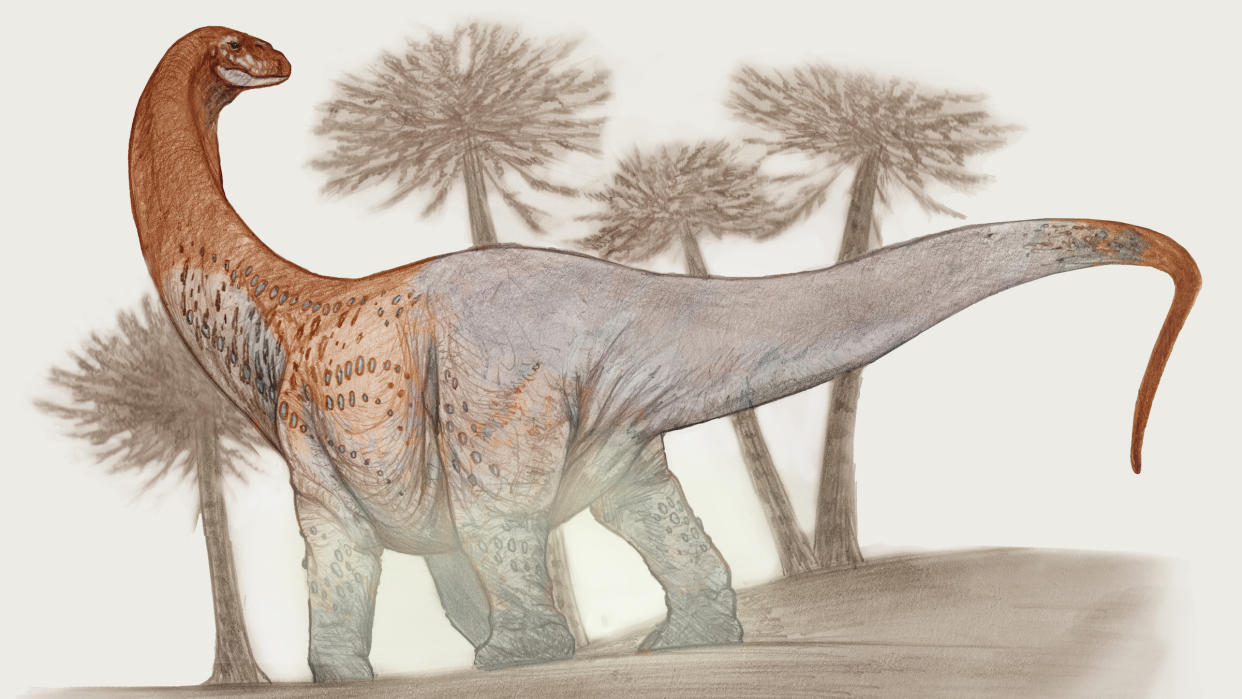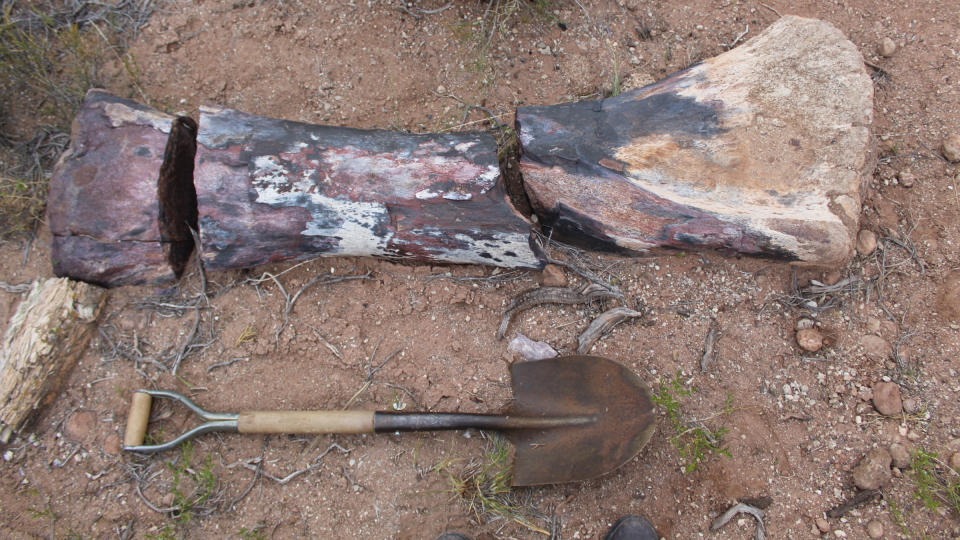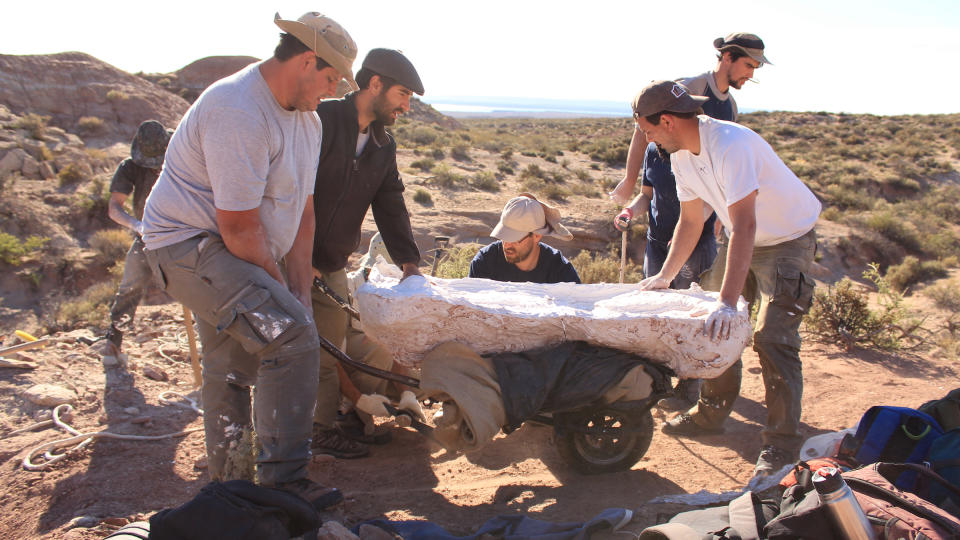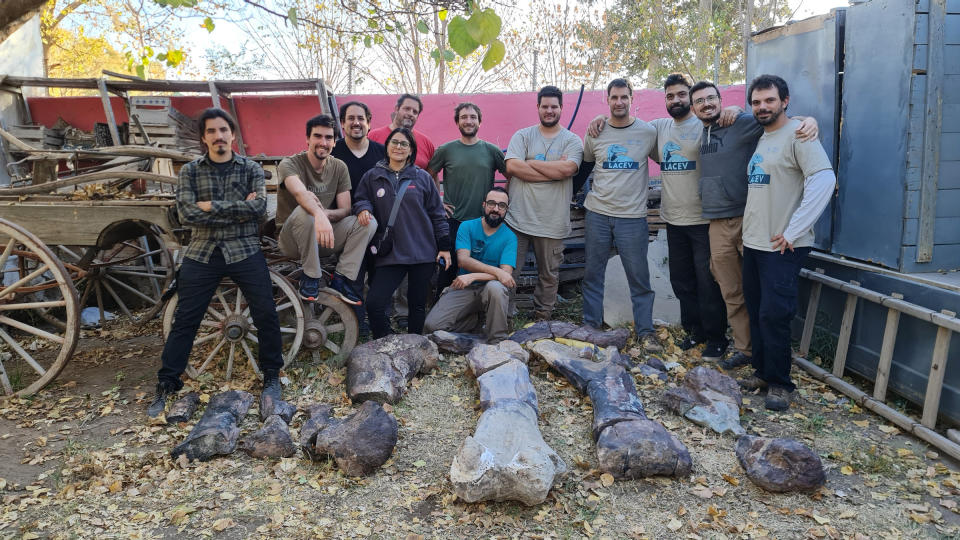Humongous, 100-foot-long dinosaur from Argentina is so big its fossils broke the road during transport


Paleontologists in Argentina have discovered the remains of a ginormous long-necked dinosaur that measured about 100 feet (30 meters) long when it lived about 90 million years ago, a new study finds.
Examining this enormous dinosaur wasn't always easy. The fossils of the titanosaur — the largest of the long-necked dinosaurs — were so heavy, they caused a traffic accident when the researchers were transporting the herbivore's remains to Buenos Aires to be studied.
"The weight destabilized the vehicle and caused an accident," study senior author Fernando Novas, a paleontologist at the Bernardino Rivadavia Natural Sciences Museum in Buenos Aires and a researcher with the Argentine National Research Council (CONICET), told Live Science in a translated email. "Luckily, no one was seriously injured and the bones of this dinosaur, which flew through the air, were so hard that they were not damaged. On the contrary, they broke the asphalt of the road."

That accident helped inspire the dinosaur's scientific name: Chucarosaurus diripienda. In the region's indigenous language Quechua, "Chucaro" means "hard and indomitable animal," while in Latin "diripienda" means "scrambled."
Related: 1.7 billion Tyrannosaurus rexes walked the Earth before going extinct, new study estimates
In 2018, Paleontologists discovered the fossils of C. diripienda, which were scattered and half-buried on the hills of the Patagonian steppe in the province of Río Negro. The fossil included seven different bones: both from its forelimb (including the humerus, radius, metacarpus) and from the hip (ischium) and hind leg (femora, tibia and fibula). "The bones were so heavy that they had to be moved, inch by inch, by several people," Novas said.

During its lifetime in the mid-Cretaceous, C. diripienda would have weighed between 30 and 40 tons (27 and 36 metric tons), Novas said. "However, it is far from being one of the largest and most colossal dinosaurs, such as Patagotitan, Argentinosaurus or Notocolossus, which would have weighed between 70 tons [63.5 metric tons]."

related stories
—Dinosaur-killing asteroid did not trigger a long 'nuclear winter' after all
—T. rex had thin lips and a gummy smile, controversial study suggests
—'Extremely rare' fossilized dinosaur voice box suggests they sounded birdlike
Meanwhile, the longest dinosaur on record is likely Supersaurus, which lived about 150 million years ago in what is now the American West, and likely exceeded 128 feet (39 meters).
Although C. diripienda was extremely long, it used its length to its advantage. "Its long neck allowed it to feed on the leaves at the top of the trees, and its long tail would have been an effective weapon against attacks by the large carnivorous dinosaurs that lurked in its environment," Novas said.
The study was published in the June issue of the journal Cretaceous Research.
Editor's note: Updated at 9:45 a.m. EDT on May 22 to fix a conversion. The titanosaur Chucarosaurus diripienda is about 100 feet (30 meters) long.

